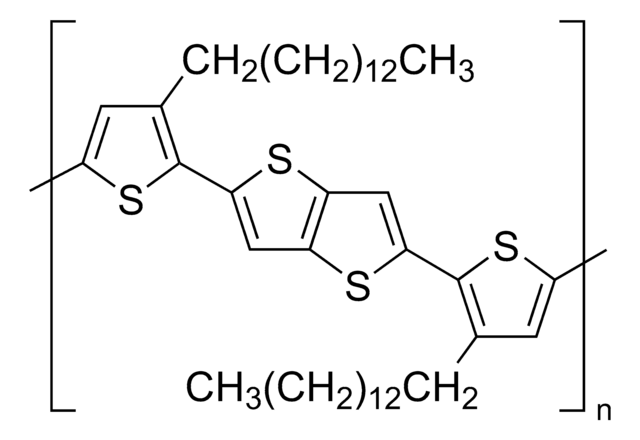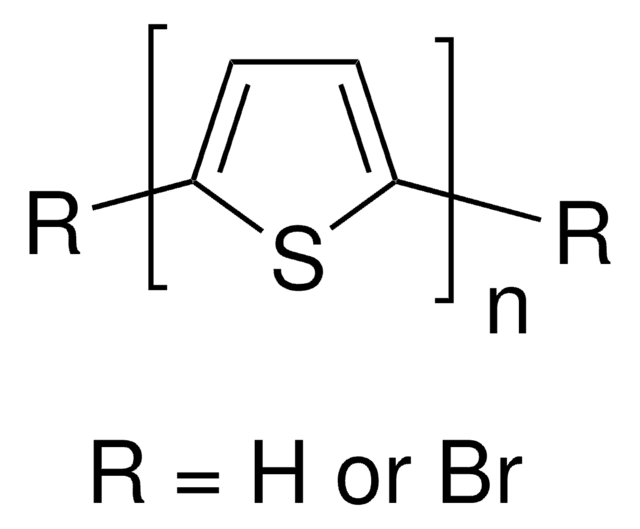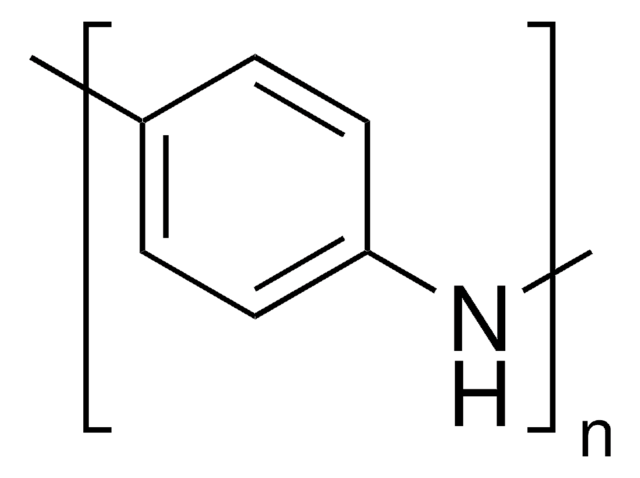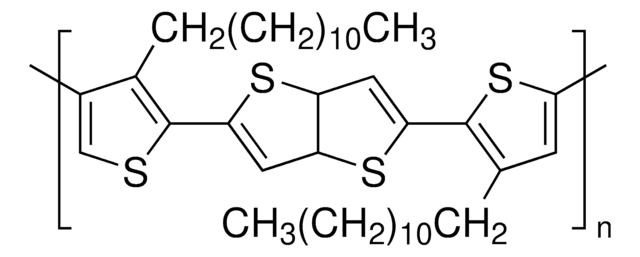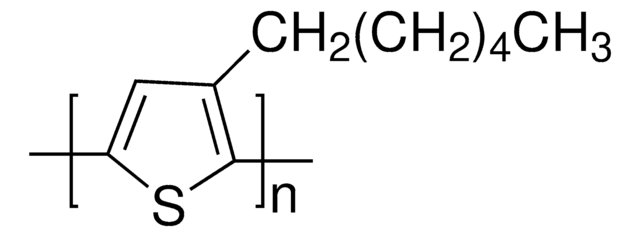906921
PQT-12
Sinónimos:
Poly(3,3′′′-didodecyl[2,2′:5′,2′′:5′′,2′′′-quaterthiophene]-5,5′′′-diyl), Poly(4,4′′-didodecyl[2,2′:5′,2′′:5′′,2′′′-quaterthiophene]-5,5′′′-diyl)
About This Item
Productos recomendados
descripción
Band gap: 2.27 eV
Eox = 0.45 V
Solution processable (chloroform, chlorobenzene, etc)
LIFT transferable
Formulario
solid
mol peso
Mw 10,000-25,000 by GPC
color
brown
solubilidad
>5 mg/mL (in CHCl3)
λmáx.
473 nm in toluene
Energía orbital
HOMO -5.24 eV
LUMO -2.97 eV
temp. de almacenamiento
15-25°C
Categorías relacionadas
Aplicación
Código de clase de almacenamiento
11 - Combustible Solids
Clase de riesgo para el agua (WGK)
WGK 3
Punto de inflamabilidad (°F)
Not applicable
Punto de inflamabilidad (°C)
Not applicable
Elija entre una de las versiones más recientes:
Certificados de análisis (COA)
¿No ve la versión correcta?
Si necesita una versión concreta, puede buscar un certificado específico por el número de lote.
¿Ya tiene este producto?
Encuentre la documentación para los productos que ha comprado recientemente en la Biblioteca de documentos.
Artículos
Professor Tokito and Professor Takeda share their new materials, device architecture design principles, and performance optimization protocols for printed and solution-processed, low-cost, highly flexible, organic electronic devices.
Professor Chen (Nankai University, China) and his team explain the strategies behind their recent record-breaking organic solar cells, reaching a power conversion efficiency of 17.3%.
Nuestro equipo de científicos tiene experiencia en todas las áreas de investigación: Ciencias de la vida, Ciencia de los materiales, Síntesis química, Cromatografía, Analítica y muchas otras.
Póngase en contacto con el Servicio técnico